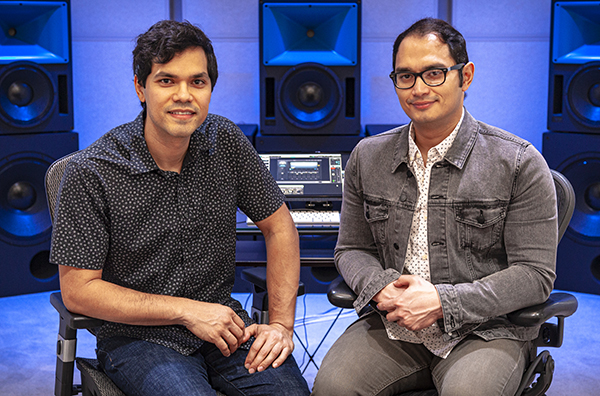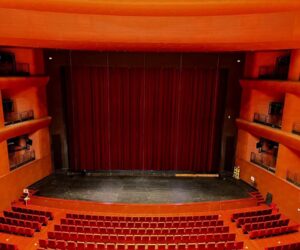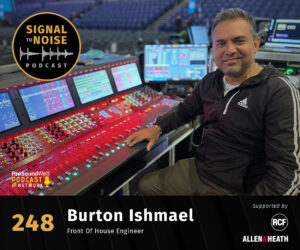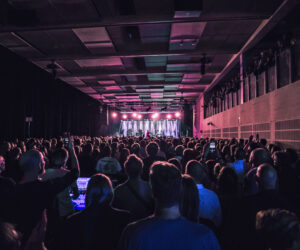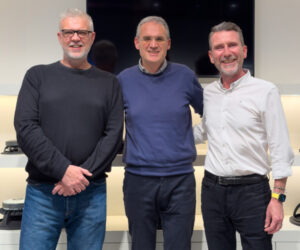Sioux City, IA-based BNY Productions is utilizing Waves eMotion LV1 Live mixers and Waves plugins to manage remote broadcast streaming of events that include political rallies and speeches.
“We were out on the road with a client,using the eMotion LV1 mixer and also supplying video, lighting, staging, and room accessories such as stanchion, flags, pipe and drape, and more,” explains Bill Kristijanto, co-woner of BNY Productions, “However, due to Covid-19, the client had to stop doing all live events. They came to us for a solution to be able to do broadcast, without a crew in the room. Subsequently, we needed to build a TV/broadcast studio that was able to handle the client’s needs, such as phone interviews, podcast, video conferencing, direct to camera recording, live network TV interviews, and live virtual events, while being controlled/produced off site.”
He continues, “Little did we know that our decision to move to the eMotion LV1 in 2016 was the best choice we could have made for a situation such as this, and today we own 10 eMotion LV1 mixers. We’re now able to easily remote into the mixer from states away. This is definitely a feature that wouldn’t be as easy to do with any other console on the market! The LV1’s strengths and capabilities continue to reaffirm that we made the right decision four years ago.”
The main studio at BNY headquarters is equipped with two SoundGrid Extreme Server-Cs and an Apogee Symphony I/O Mk II 8×8+8MP, and the remote studio built for tje client also includes two SoundGrid Extreme Server-Cs joined by DiGiGrid IOX I/O interfaces. The remote studio audio signal chain starts with either a DPA 4017B shotgun mic or a DPA lavalier mic, into a DiGiGrid IOX I/O interface. The client has an option of monitoring through an IFB or a wedge, depending on the event.
Out of the console, the audio gets embedded into the video system, which then goes into a custom server that takes care of the point-to-point streaming over to the control studio for monitoring. Once the data is decoded by another custom server in the Control Studio, the audio then goes into a LV1 mixer using an Apogee Symphony I/O feeding into a Meyer Bluehorn loudspeaker system.
“One of the big advantages of this setup is that we’re able to have different engineers/operators control part of the system from different locations,” Kristijanto says. “For example, we can have a video engineer in Pennsylvania, a shader in Washington D.C., and an audio engineer in Iowa, all run an event from their homes.”
He adds,“There are several unique benefits using the LV1 system. As an audio engineer, I like that I’m able to make a custom signal flow to the individual channel strip. Other consoles don’t have that capability. Typically, the channel strips, such as the EQ, dynamics, effects, etc., are predetermined in other consoles. The eMotion LV1 allows us to integrate easily with plugins so I can precisely shape the sound to my liking.”
Waves plugins are also an integral part of the workflow. BNY is currently using the Mercury, SSL 4000 Collection, Abbey Road Collection, Dugan Automixer + Dugan Speech, Pianos & Keys, API Collection, and the CLA Classic Compressors bundles.
“If I would have to choose only four to five must-have plugins, I would start with the Waves WNS Noise Suppressor, since rather than only having one control, the WNS lets me have control in several frequency bands, allowing me to suppress some bands, without affecting others,” notes Kristijanto. “The Primary Source Expander (PSE) would be next – it is unique in that the talent doesn’t always want to mess with IFB and would prefer to use a wedge instead. The PSE really helps minimize the wedge noise into the talent’s feed. I would also include Vocal Rider, which is a true timesaver, as we required something that could keep up with a dynamic speaker. The talent can sometimes talk very softly followed by a dramatic change in volume. By putting this plugin on top of the signal chain, it helps keep the level consistent down the chain, so it hits the dynamics at about the same level. That way, the presenter’s voice is always present regardless of the volume changes.”


